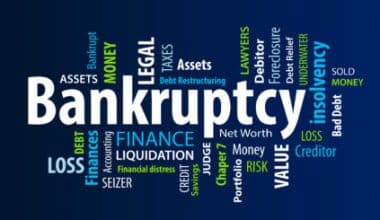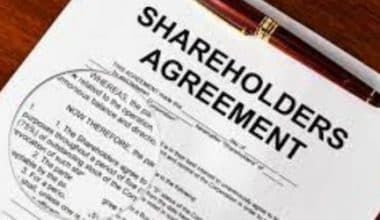A pump-and-dump scheme is a type of market manipulation and financial fraud in which members of a group purchase security and then persuade others to do the same. The goal is to illegally “inflate” the price of a stock, cryptocurrency, or other overpriced investment. But, before long, the price falls precipitously, and the pump-and-dump strategy collapses. Let’s see more about how this pump-and-dump scheme works and how you can avoid it.
What Is A Pump and Dump Scheme?
A pump-and-dump scheme is a deceptive scheme that aims to raise the price of a stock or investment by making false recommendations. These recommendations are based on inaccurate, misleading, or excessively overstated statements. The perpetrators of a pump-and-dump scam already have a position in the company’s stock and will sell after the hype has caused the share price to rise.
According to securities law, this activity is prohibited and can result in large fines. The industry’s rising popularity of cryptocurrencies has led to the emergence of pump-and-dump operations.
How Does A Pump and Dump Scheme Work?
Cold calling was commonly used in pump-and-dump tactics. Most of this online activity has evolved since the introduction of the Internet; fraudsters can now send hundreds of thousands of emails to naïve targets or post statements online, pushing investors to acquire a stock rapidly.
These messages generally claim to have inside information about a forthcoming event that will result in a big increase in the share price. When buyers flood in and the stock skyrockets, the perpetrators of the pump-and-dump scam sell their shares. In these cases, the volume of these shares sold is frequently large, leading the stock price to plummet dramatically. In the end, many investors suffer massive losses.
Pump-and-dump strategies target micro- and small-cap stocks on less regulated over-the-counter exchanges than official ones. Because they are easier to manipulate, micro-cap and small-cap stocks are preferred for this abusive behavior. Micro-cap stocks typically have a low trading volume, a small float, and little company information. As a result, it does not take many new purchasers to push a stock much higher.
Pump and Dump In Pop Culture
The pump-and-dump strategy inspired two successful films: “Boiler Room” and “The Wolf of Wall Street.” Both films depicted a warehouse filled with telemarketing stockbrokers pitching penny stocks. In each case, the brokerage business was a market maker and held substantial stock in companies with dubious prospects. High commissions and bonuses were offered to brokers in exchange for placing the stock in as many customer accounts as possible. By doing so, the brokers drove up the price by selling large quantities.
When the selling volume hit critical mass and there were no more buyers, the company sold its shares for a significant profit. This caused the stock price to fall, often below the original selling price, resulting in substantial losses for customers unable to sell their shares in time.
Pump And Dump In The Crypto Market
The crypto market has emerged as the most recent venue for pump-and-dump scams. The extraordinary gains made by Bitcoin and Ethereum have sparked massive interest in cryptocurrencies. Unfortunately, due to the lack of regulation in the cryptocurrency market, its opaqueness, and the technical complexity of cryptocurrencies, cryptocurrencies are particularly well-suited for pump-and-dump scams.
A 2018 study looked at the incidence of pump-and-dump strategies in the bitcoin market. Over six months, researchers observed two prominent group-messaging platforms used by cryptocurrency speculators and discovered over 3,400 such schemes.
The Commodity Futures Trading Commission (CFTC) of the United States urged customers in March 2021 to avoid pump-and-dump schemes that can occur in lightly traded or nascent cryptocurrencies. The CFTC also announced a program that would let any whistleblower to receive a monetary reward of 10% to 30% if they revealed original enforcement action that resulted in economic sanctions of $1 million or more against a pump-and-dump operation.
Phases of The Pump and Dump Scheme
#1. The Markup
Every phase of the pump and dump concept is difficult, but the first phase is challenging. The ring of criminals must devise a comprehensive plan of attack to generate excitement for security, but more crucially, for people withdrawing their own cash.
The strategy might be as simple as disseminating a false news report. It can also be as complicated as a planned operation of press releases, phony case studies, and TV coverage.
The larger the reach, the more sophisticated the scheme and the better the execution.
The markup’s purpose is to have as many public investors as possible deeply involved in an as short period as possible.
Remember, the strategy will fail if it takes a year to build up the stock because someone will call BS on all the claims of greatness.
#2. Distribution Phase
This appears simple, but it requires some talent as well. The dishonest investors must now figure out how to liquidate their investment without producing too much volatility in the stock. This lets them command the highest share price and walk away with the most significant money.
As the stock rockets upward, the unlawful participants will need to time their sell transaction perfectly, most likely on a morning gap higher.
#3. The Crash
This phase is nothing short of a crash. The stock drops like a rock.
This is when the panic sets in for retail investors who have either lost their paper fortunes or had their million-dollar trading ambitions dashed.
How To Avoid A Pump And Dump Scheme
Understanding how a pump-and-dump scheme works is the best approach to prevent them. Here’s how to spot these con artists and avoid them.
#1. Understand what to look for
Pump-and-dump scams can occur in various investments. Always research to ensure that you understand what you’re investing in and that it’s legal.
If you’re considering investing in a hot new cryptocurrency, look into the developers (the team behind the project) and any product or service being provided to investors. Look for third-party website reviews to understand what others say about the project. If you are worried about the investment’s validity, look for another opportunity.
#2. Consider whether it makes sense.
Pump-and-dump schemes are frequently built on conjecture and hype rather than strong business or financial procedures. For example, the sentiment surrounding a certain stock may be illogical. The company may lose money or have little revenue, but the stock price suddenly rises. If you can’t explain why the price is growing, it could be a warning that it’s too high or that you’re dealing with a pump-and-dump strategy.
#3. Use your common sense.
Remember that when you invest, you are wagering on the company’s future. Be mindful of companies that are not yet profitable, and examine why you would invest in them.
It’s also vital to know that stock prices might fluctuate. If you’re considering a stock with a high price, keep in mind that stocks might fall in value and cause you to lose money quickly.
#4. Consider the source of the publicity.
A pump-and-dump scheme is based on sensationalism and a false feeling of urgency. A third party, such as a newsletter or a social media account, frequently provides the hype. If you’re considering an investment and the individual selling it to you isn’t someone you trust, the hoopla could be part of the hoax.
#5. Conduct proper research
Pump-and-dump schemes rely on investors who assume that a stock’s price will rise. You can determine whether a stock is likely to be a good or bad investment by conducting your research.
Examine a company’s financial accounts and earnings reports to see whether it is profitable and growing. You should also consider the competitive landscape to see how well the organization can compete.
High valuations or a lack of earnings are red flags of a possible pump-and-dump strategy.
#6. Be wary of “hot tips.”
Pump-and-dump schemes rely on a sense of impending doom and a dread of losing out. These scams rely on people wanting to get in on the activity and thinking that the opportunity will pass them by if they don’t act.
What Is An Example of A Pump and Dump Scheme?
Ben and Jason are stock market participants. Ben invests $5,000 in a company by purchasing 1000 shares for $5 each. He then starts disseminating false information about the corporation being a public sector entity due to great performance based on inside information.
In three days, the stock price rises to $30. Jason notices that the price is rising. He purchases 1000 shares of the company at $30 each, bringing his total investment to $300,000.
The share price quickly jumps to $50 per share. Ben decides to leave the market to benefit. He sells all of his shares for a $45000 profit. With the rumors fading and no significant increase, the share price falls to $5 per share. While Ben is swimming in cash, Jason is drowning in debt.
Real-World Examples Of A Pump and Dump Scheme
Pump and dump examples are common in the financial news. Fearing they may miss out on a fantastic chance, inexperienced investors fall victim to the scam.
Spammy phone calls and brochures were popular methods of scamming in the past. Fraudsters with access to online trading gradually began spreading misinformation through emails, social media, and chat rooms, among other channels. Scammers typically promote via spamming communications.
Individual investors increased GameStop’s share price from $20 to $483 in two weeks in January 2021. GameStop’s stock dropped over 90% to $53.50 in February. Federal regulators suspected price manipulation and were looking into the buying frenzy for any indications of stock price manipulation.
When it comes to pump-and-dump tactics, cryptocurrency isn’t far behind. Prosecutors charged John McAfee, the founder of the well-known anti-virus business, with making millions by allegedly manipulating the market price of several cryptocurrencies in 2021.
Is A Pump and Dump Scheme Illegal?
As previously stated, stock price manipulation through misleading information is a scam that frequently steals the victims’ hard-earned money. As a result, it is unlawful under various laws and actions. Laws such as the Securities Act of 1933 and the Securities Exchange Act of 1934, among others, have sections that prohibit securities misstatements and fraud.
Depending on the circumstances, other laws may also be used to punish an offender. The SEC is constantly on the lookout for instances of stock price manipulation. The regulatory authority continues to charge offenders to protect innocent investors who bear the brunt of manipulation. Many government agencies also provide an anonymous reporting mechanism for offenders.
In Conclusion,
A pump and dump scheme involves raising the price of vulnerable stocks using misleading promotions and selling off the shares once their price booms. The Securities and Exchange Commission (SEC) penalizes pump-and-dump perpetrators since the conduct is prohibited. Small-cap stocks are more vulnerable to this scam, and investors should be wary of strange hype.
Related Articles
- Finance Movies: All-Time Top Picks for Newbies & Pros (Updated)
- 2023 Agriculture Loan List, Updated!!!(13 + Application guide)
- Transfer Pricing: Definition, Guidelines & Importance
- What is Forensic Accounting: Overview, and How it Works.
- CRAWL SPACE ENCAPSULATION COST: Comprehensive 2023 Guide, Updated!!!






